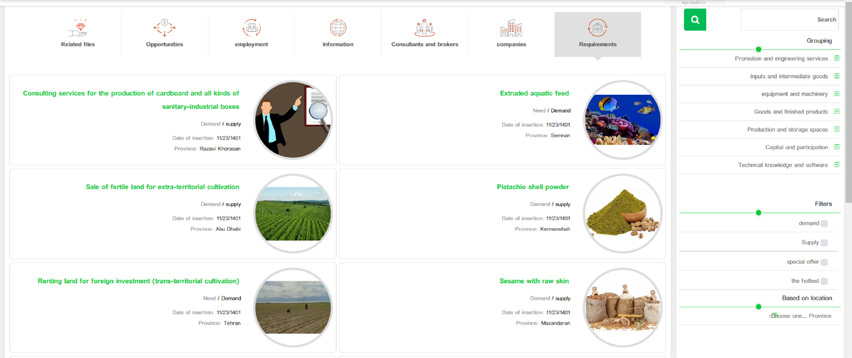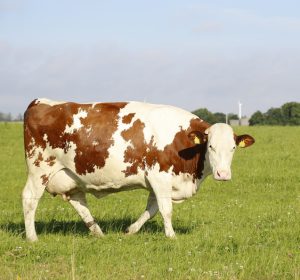By: Trends Editorial Team
The creator of the conceptual model for Iran’s Agricultural Portal announced the launch of the first phase of the Agri.Aralist.ir next year.
Making rational decisions requires experience, expertise and knowledge, acting upon existing opportunities promptly and creating new values, which is only possible through access to accurate and authentic data. Aram Razzaghi cites the absence of accurate data and slow collection, refinement, processing and analysis processes as the main causes of poor decision making, work overlap and waste of time and resource. “These cost the country billions of dollars annually, as demonstrated by unfinished projects, inability to meet production quality and quantity requirements, dissatisfaction among Iranian consumers, failing exports and widespread requests for deferrals on investment loans.” He commented.
“Technological advances including the cyberspace, internet, ecommerce and social media have presented new methods to receive, process and distribute data.” he added. “Economic players spot opportunities using personal insight and perceptions based on market observations or gathered through governing agencies and private sector consultants and brokers. They receive data relevant to their financial decisions through intelligence documented as news items and reports to initiate, resume or complete their activities.”
As a multifaceted knowledge-oriented enterprise, Shamim Consulting Group has been offering a broad range of services in the form of business development consulting for the past 25 years. The group has launched the Iran Agricultural Portal, which introduces the behavioral and structural relationship between data and decisions as a conceptual matrix and a precise model designed by observing and analyzing economic players’ economic decision-making in all areas of industry, mining, trade, agriculture and the service sector. During its initial phase, the portal will target the agriculture sector, more specifically the livestock and poultry industry.
Razzaghi asserts that as the main bodies regulating the agriculture sector, the Ministry of Agriculture, industry specific associations in different sectors, Keshavarzi Bank (Bank Keshavarzi also known as “Agriculture Bank of Iran”, is the first financial institution specialized in agriculture in Iran and a major state owned Iranian banking enterprise.) and the Planning and Budget Organization can play a central role in promoting and contributing to the system, while benefiting from the data and transactions.
In the conceptual model, each industry is categorized into the industrial and product/service subgroups and the entire value chain for each product or service is arranged in the matrix rows.
“Agriculture is a leading contributor to Iran’s economy, accounting for 11% of GDP and 17% of the country’s employment. Iran produces some 120 million tons of agricultural products, making it one of the main producers in the world.” said this member of Shamim Consulting Group. “Such a system can provide hundreds of millions of dollars in revenues in an industry that generates hundreds of thousands of requirements, job opportunities and reports and news items, contributes to economic research, production, service and trade initiatives, and attracts hundreds of millions in investments and machinery and equipment sales and purchases.”
The value chain comprised of raw materials, semi products, finished products, spare parts, machinery and equipment, services (consulting and executive), production spaces, capital and technology will form the rows, with columns containing roles, actions, requirements, capabilities, opportunities and information (news, files, reports, links, events and data bases). The data is in fact not only categorized, but also clustered and placed on the same object. To illustrate, a news item or an investment opportunity for corn is categorized under agricultural products and then placed on crops/corn. All the data and economic activities related to a specific product or service and by extension each sub-industry, industry and sector is placed together. With its unique B2B2C conceptual model, economic players in the agriculture sector can optimize their financial decisions.

“Simply put,” he explains about the function of the platform, “The answer to the question ‘where are all the economic actors in Iran’s livestock and poultry sector?’ would be as clear as the question itself. ‘Somewhere in Iran.’ If asked ‘What are the economic stakeholders of the livestock and poultry sector operating somewhere in Iran doing?’ The answer would be ‘an activity in the livestock and poultry feed industry.’”
Following extensive research and deliberation, the decision was made to provide associations, unions and trades with the license and open source code free of charge to avoid monopolization and promote the use of the conceptual model. As well as membership recruitment and information flow, they can operate their industry-specific system and enhance the services offered to their members using revenues generated from the services offered on the platform.

With widespread usage of the system in the agriculture sector and a surge in membership numbers, further developments in the country’s agriculture sector can be expected through big data logic, data mining, artificial intelligence and due diligence. Data from each council will be monitored, assessed and analyzed, providing outstanding output to inform planning for economic macro management in the National Development Fund, the Planning and Budget Organization, governors’ offices, and state, semi-state and private organizations.
While the platform is to be initially run in Iran, the universal logic and conceptual model can be adopted by any country and tailored to its specific market needs.




